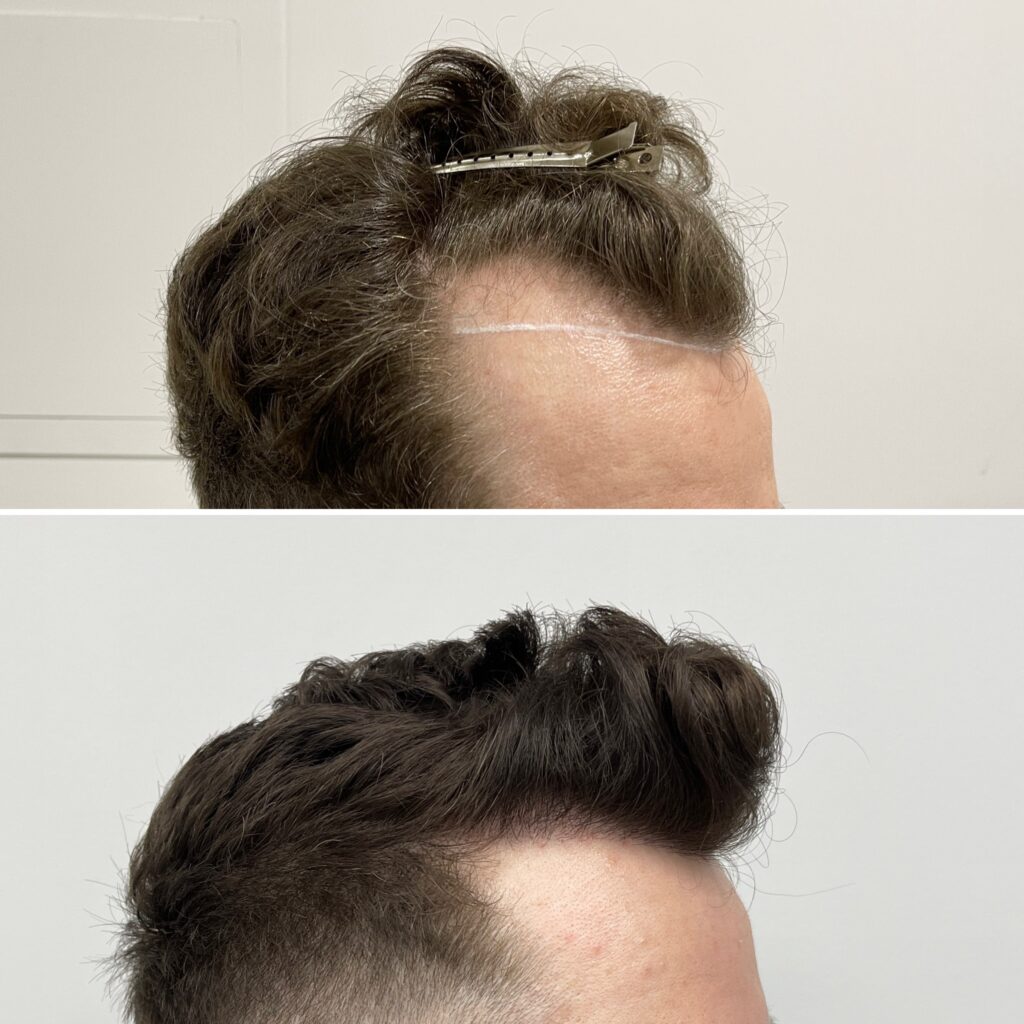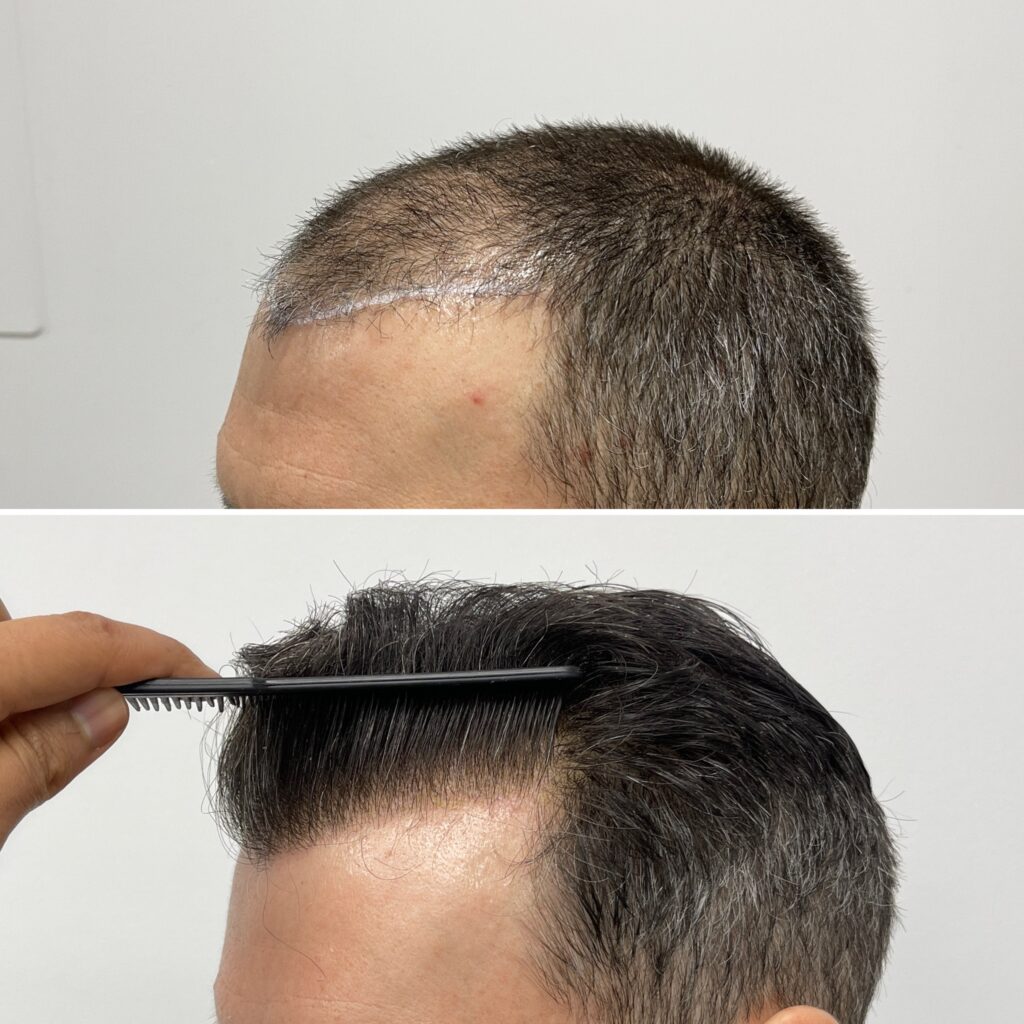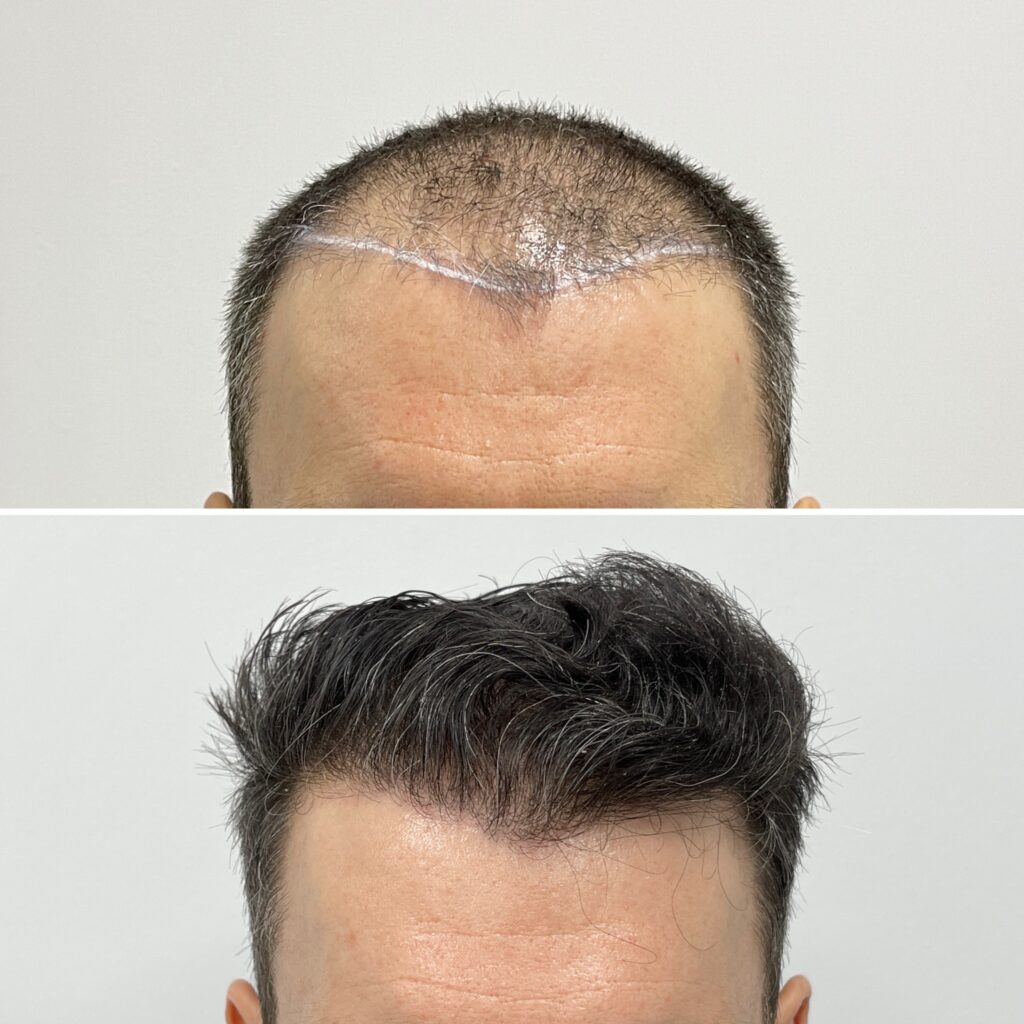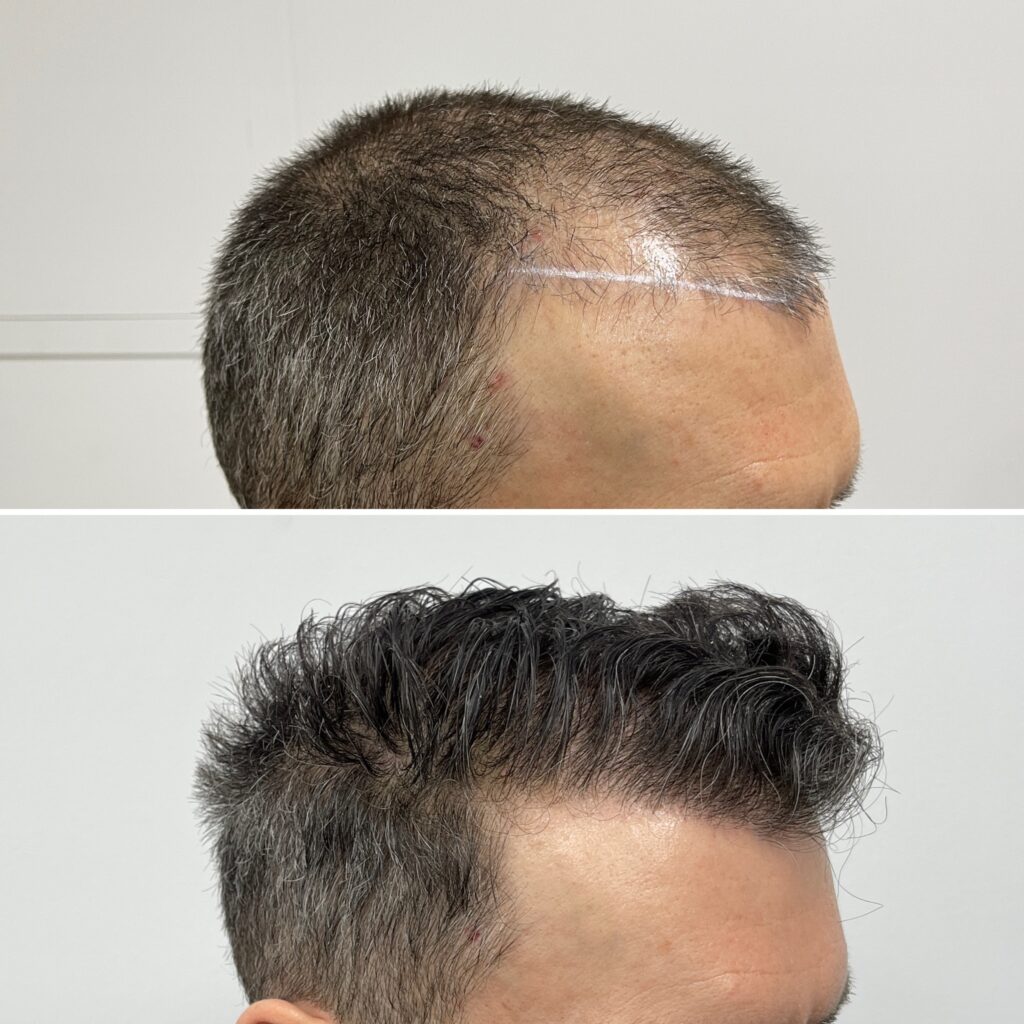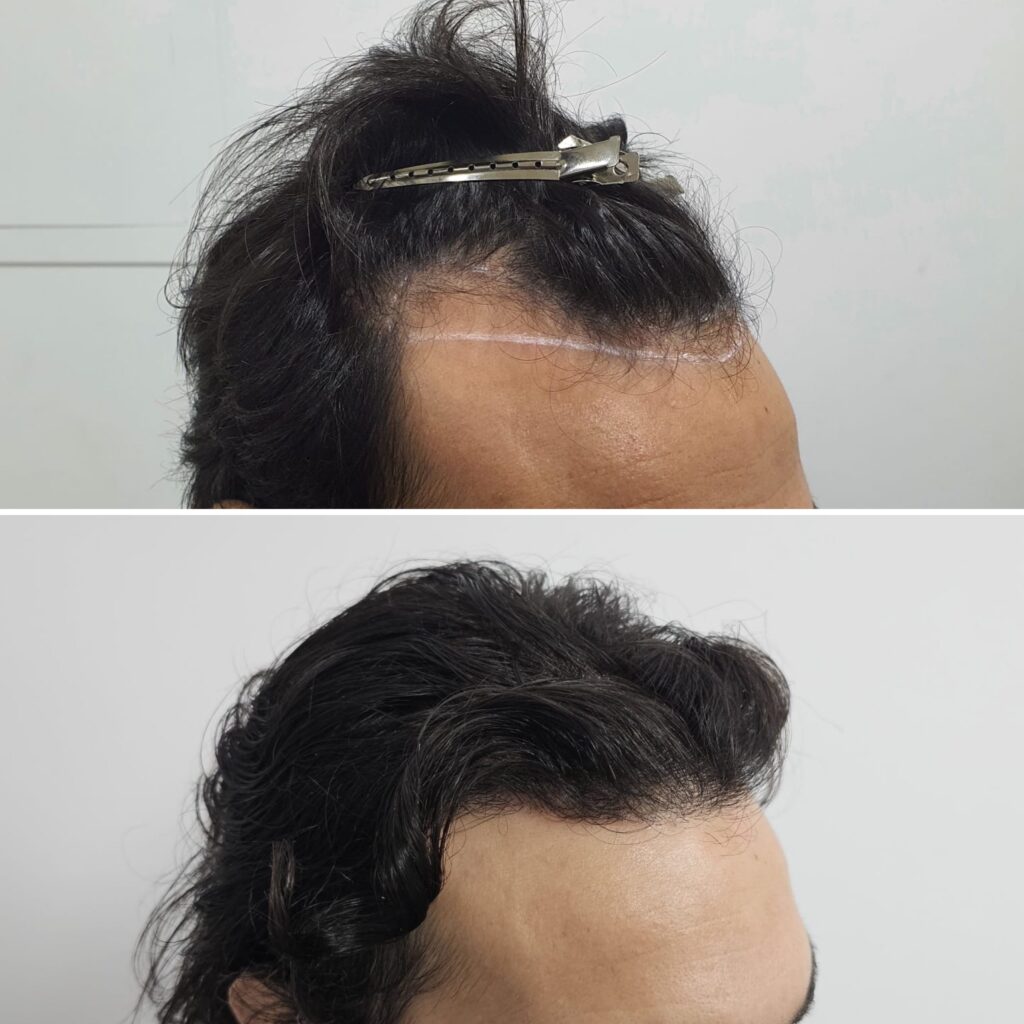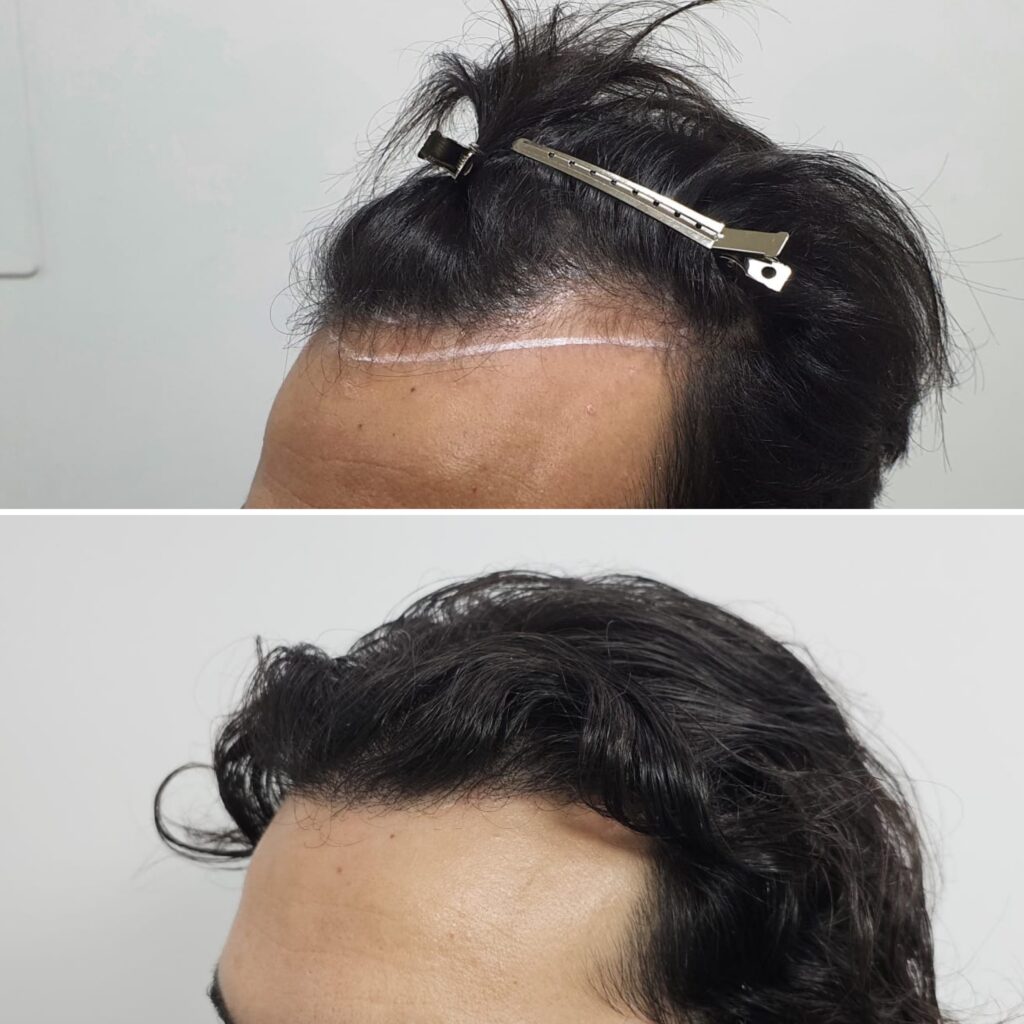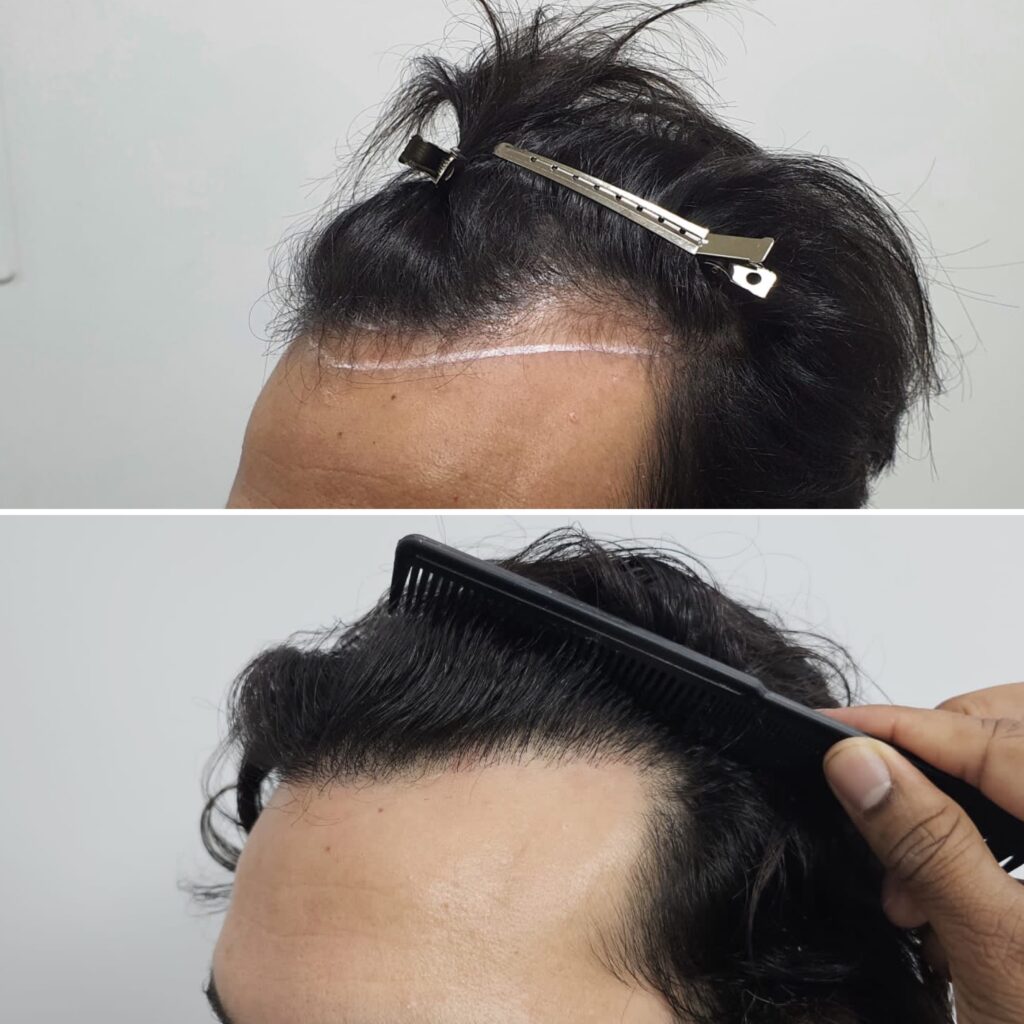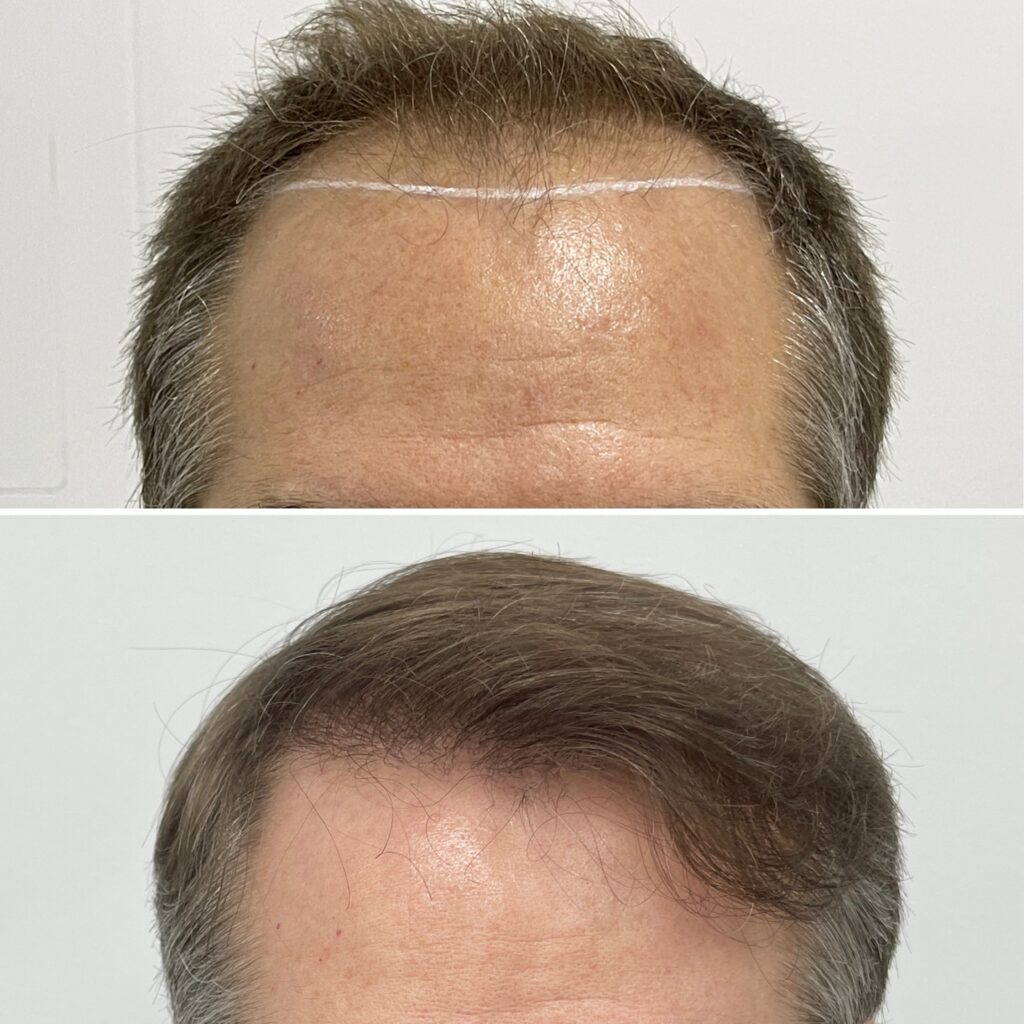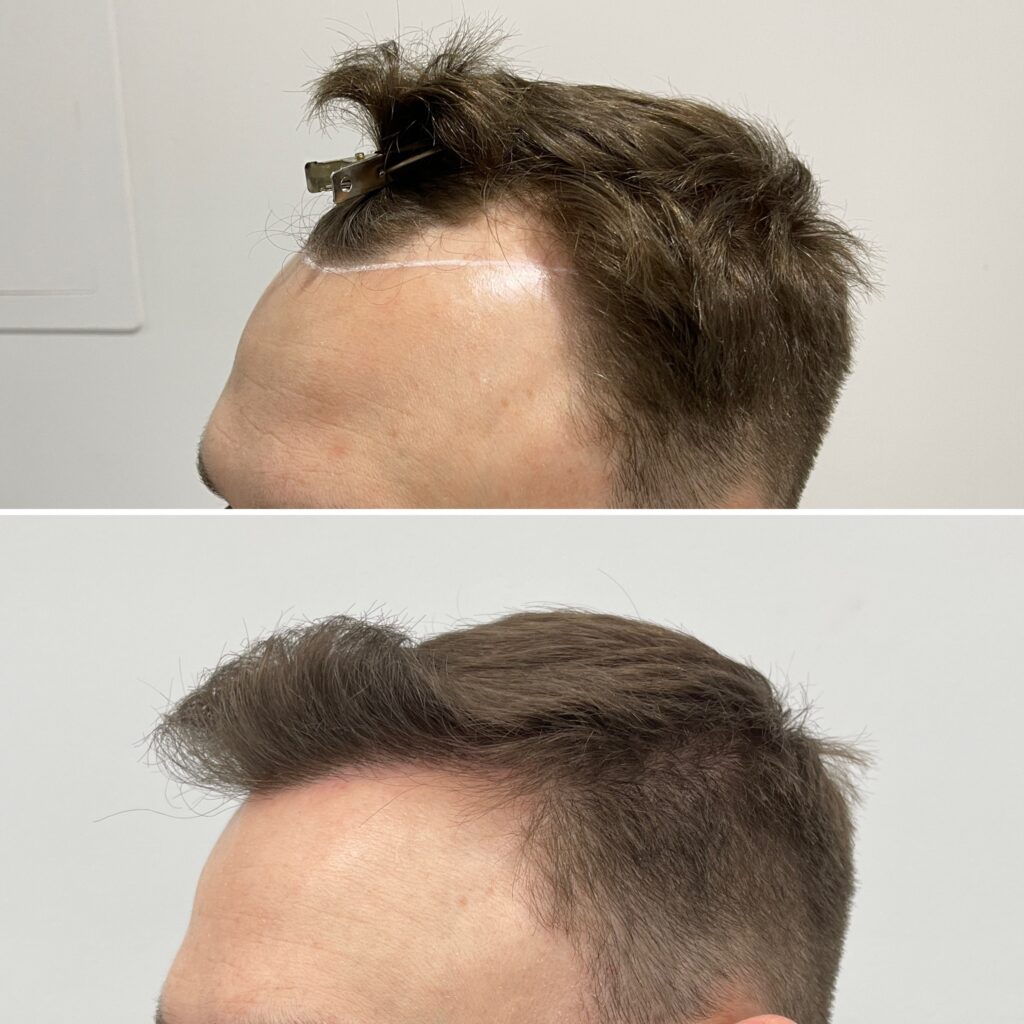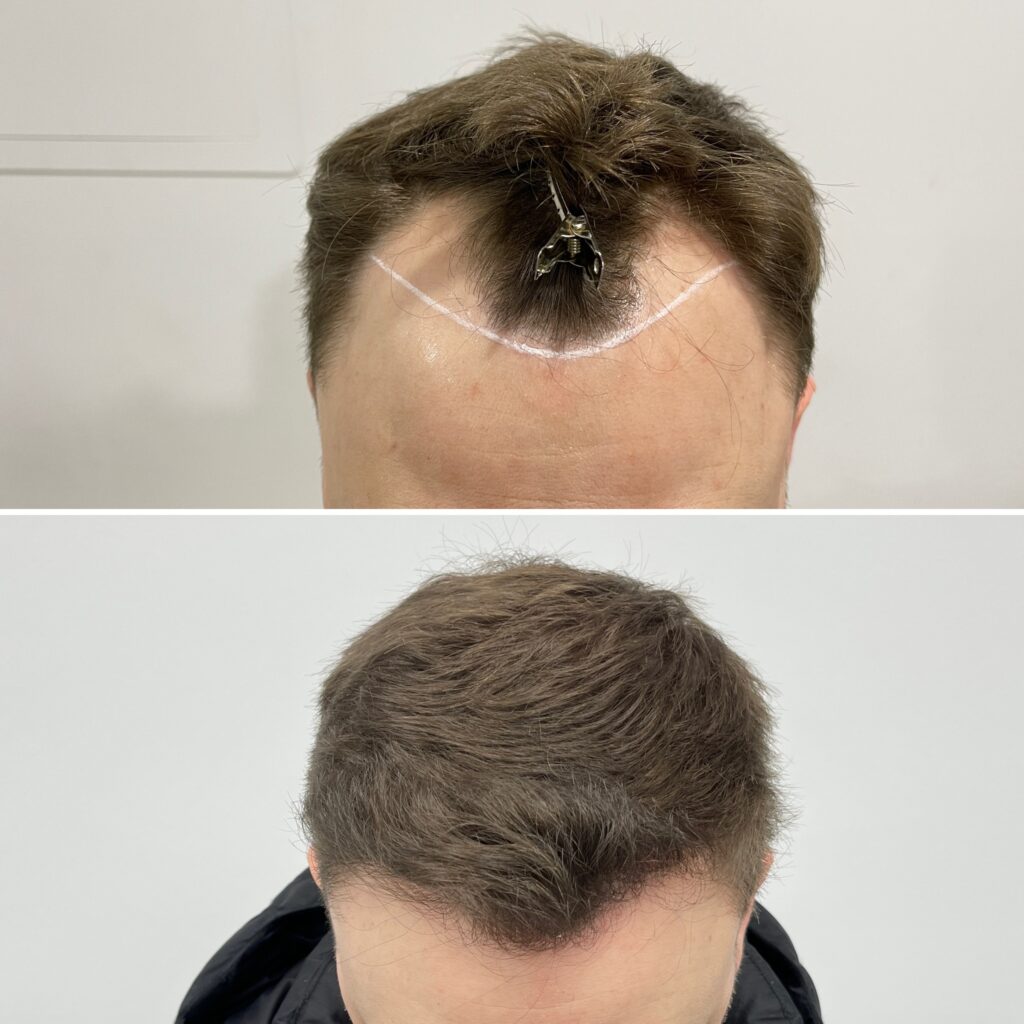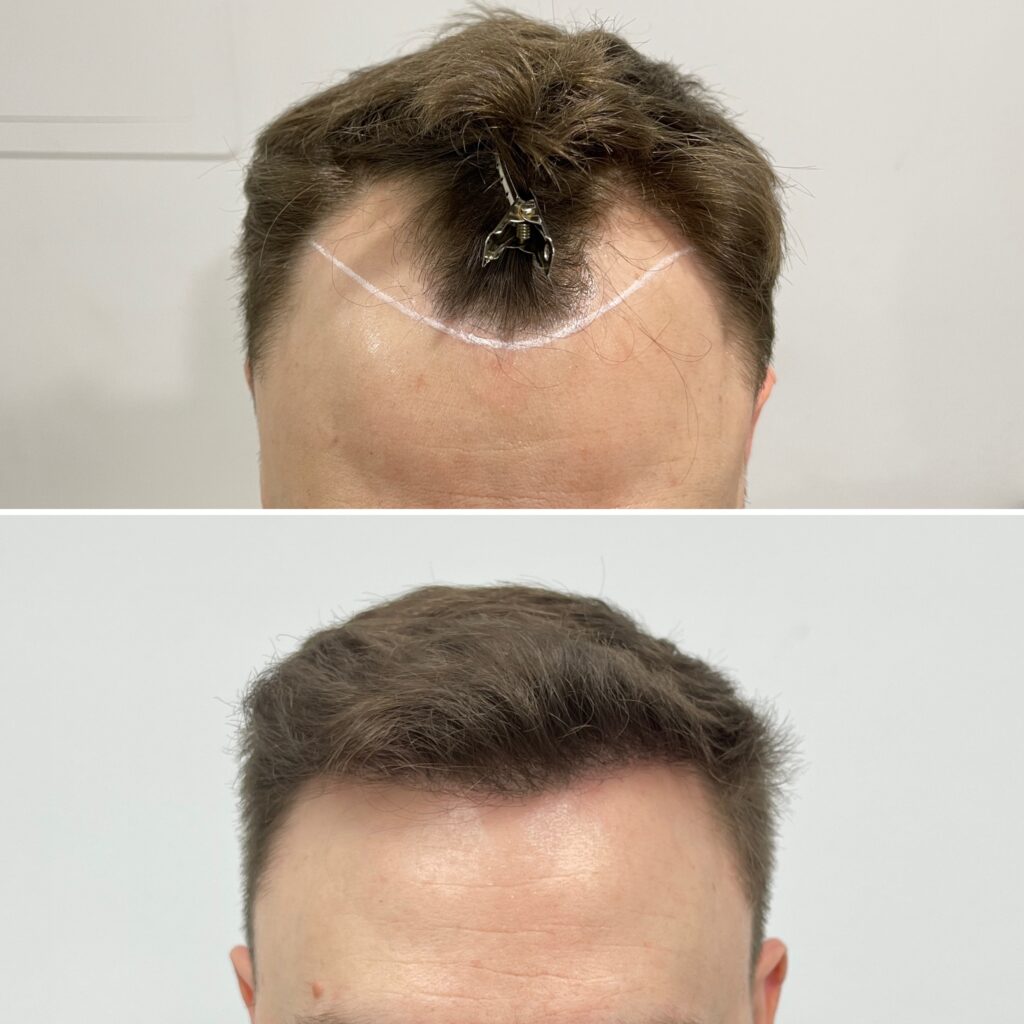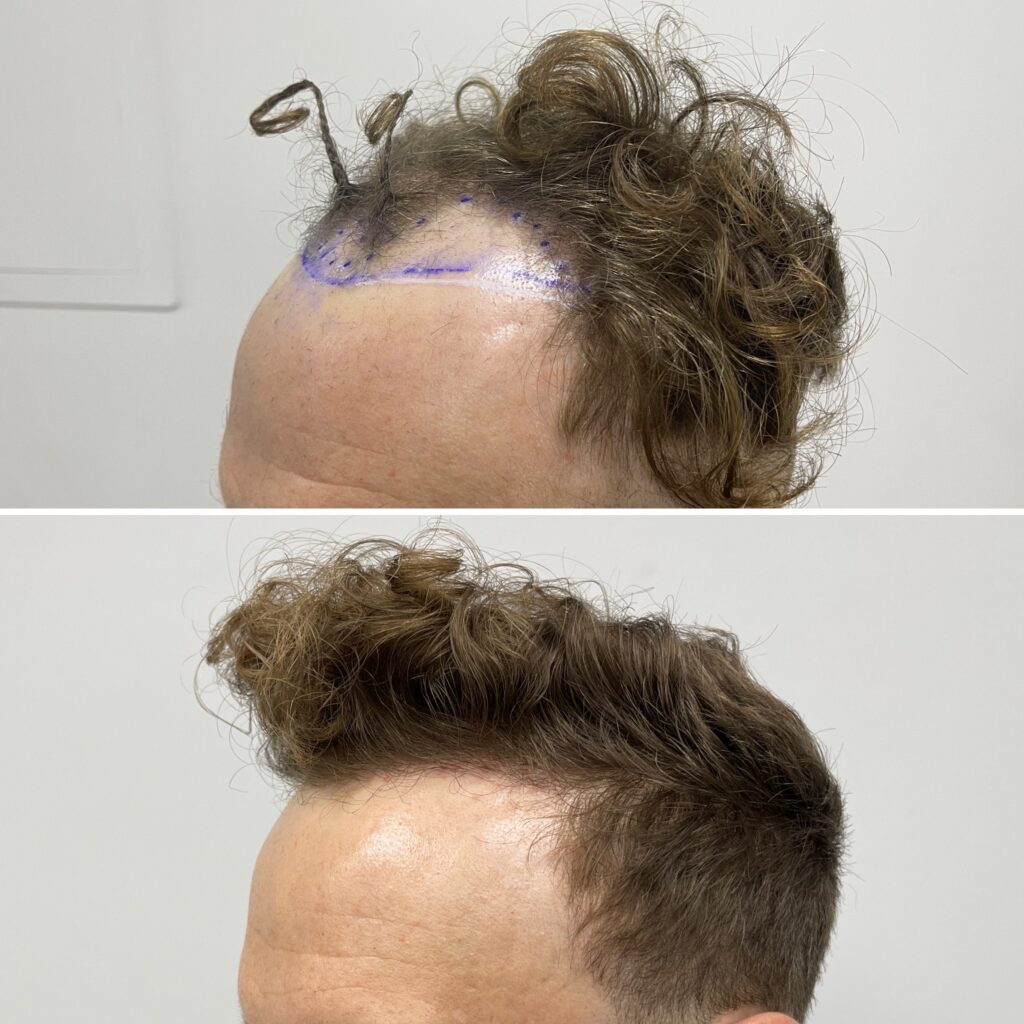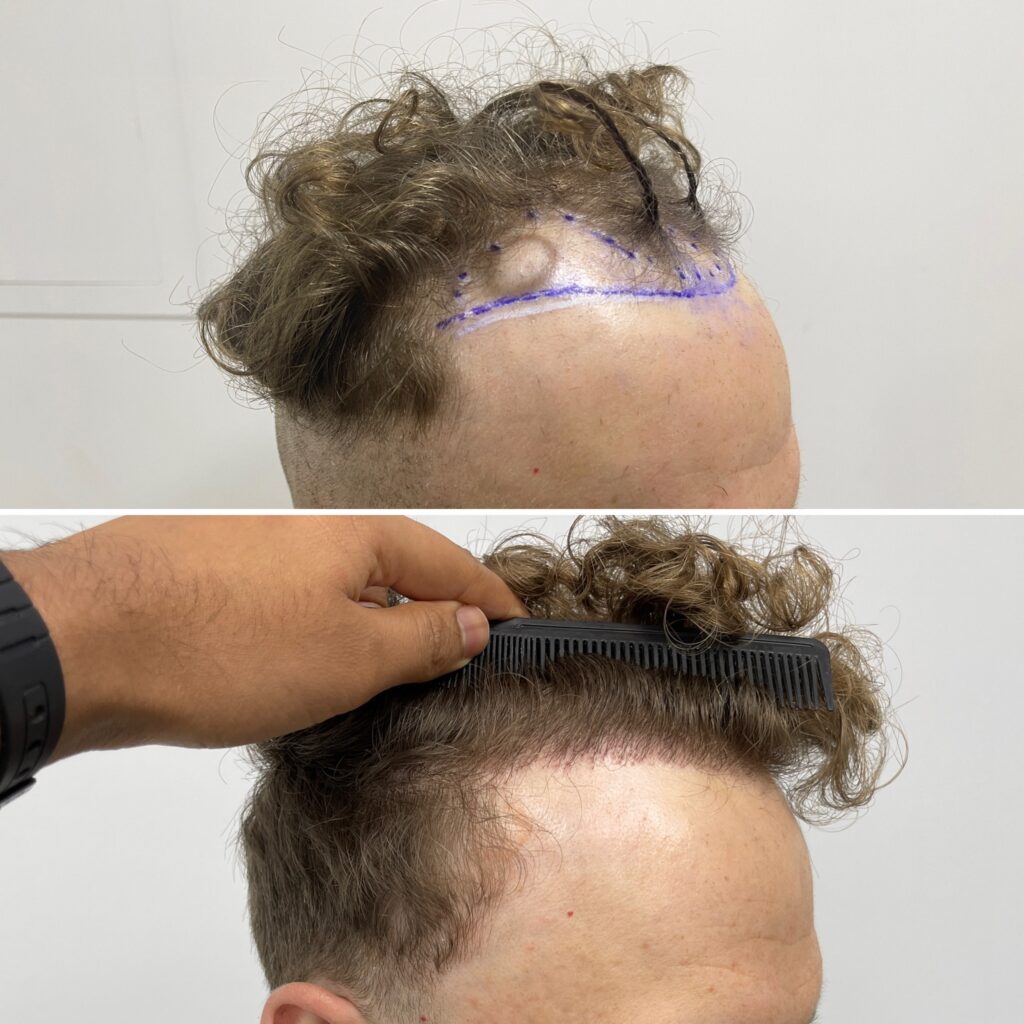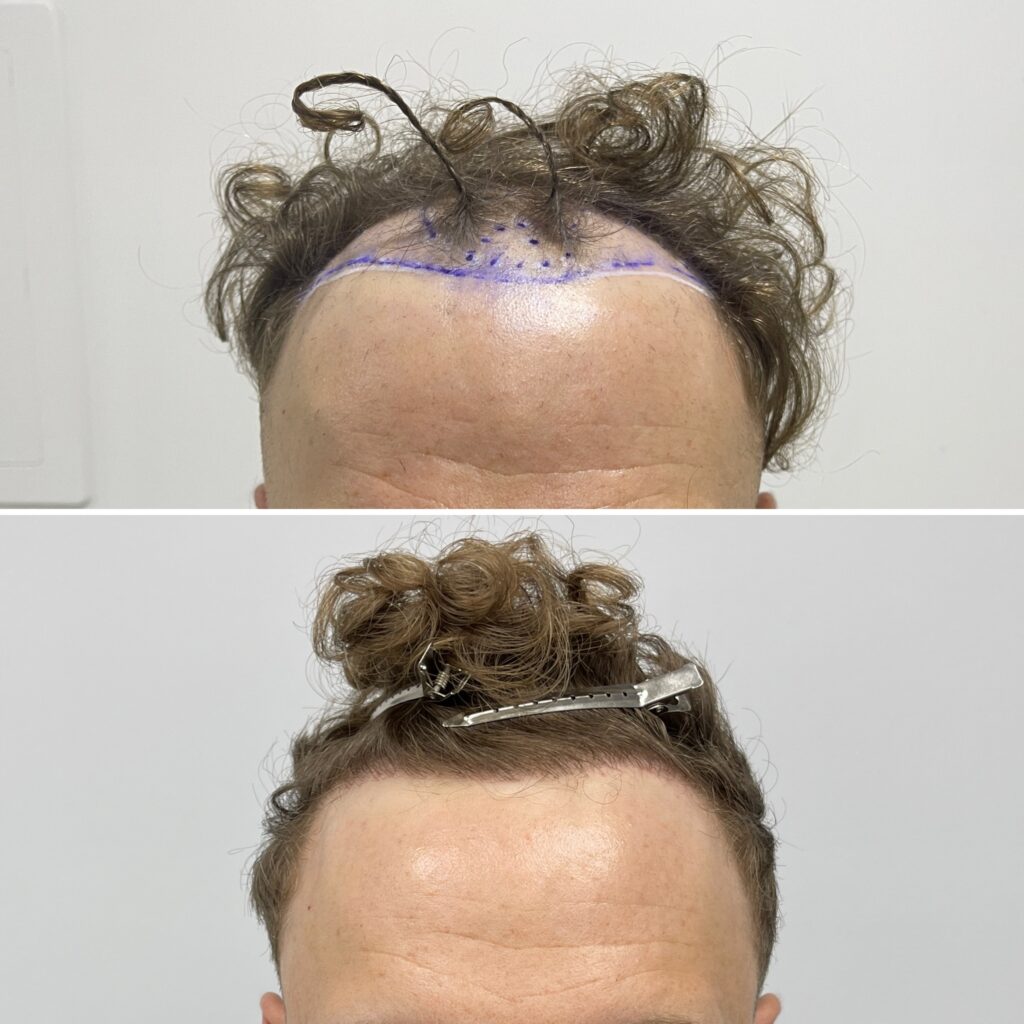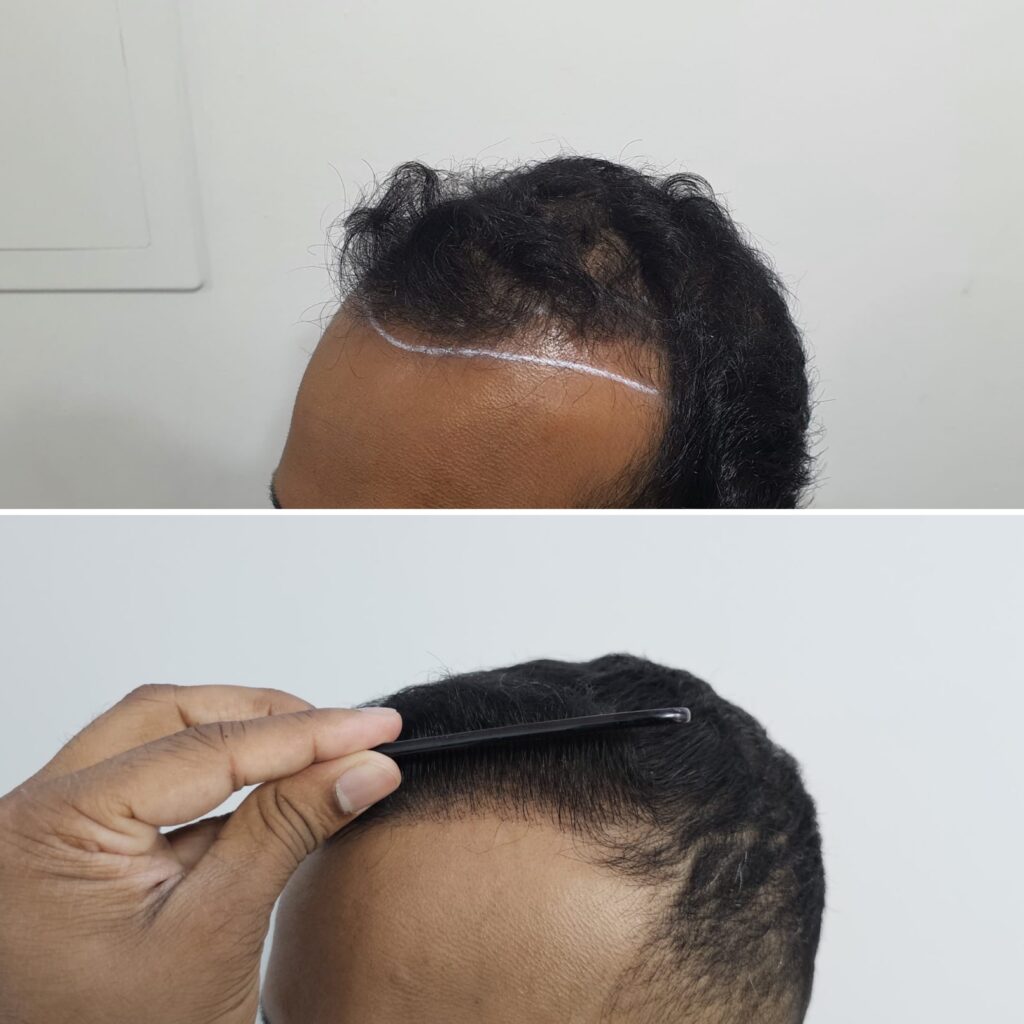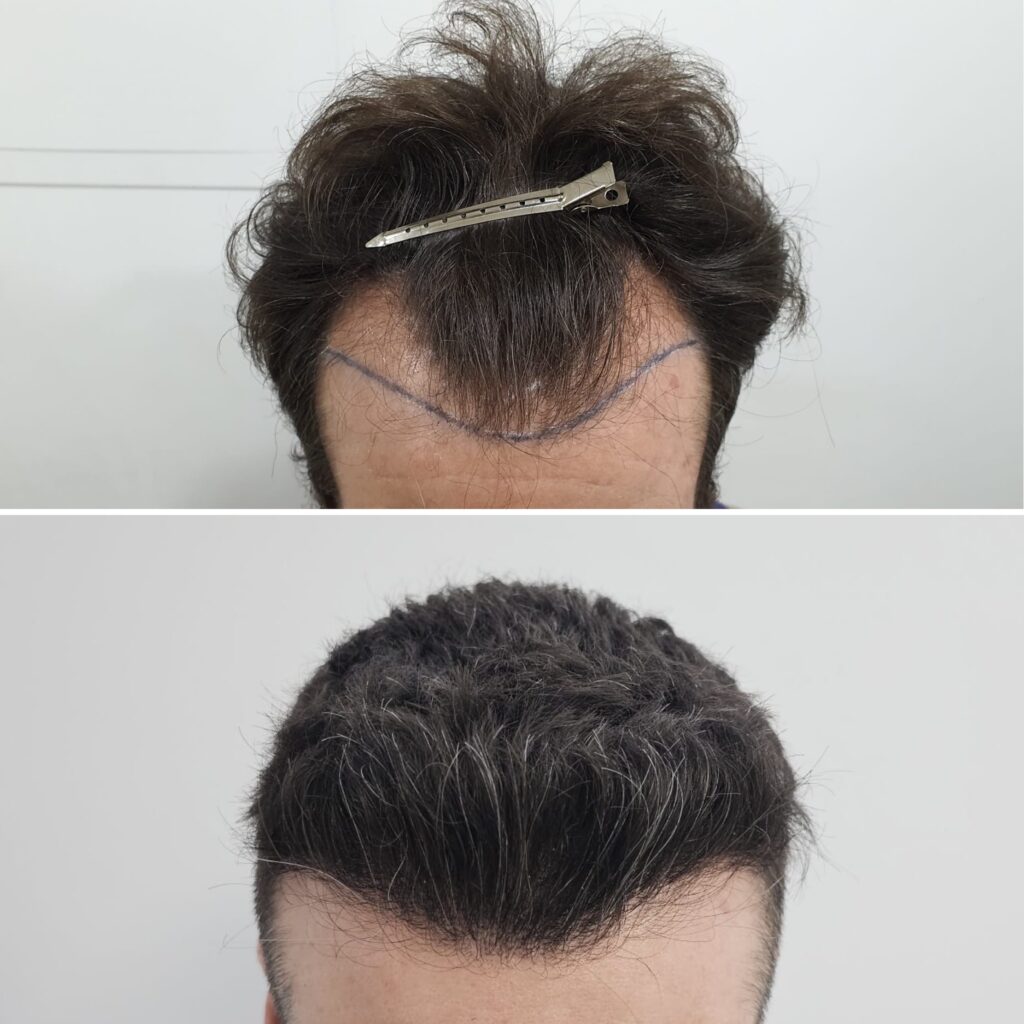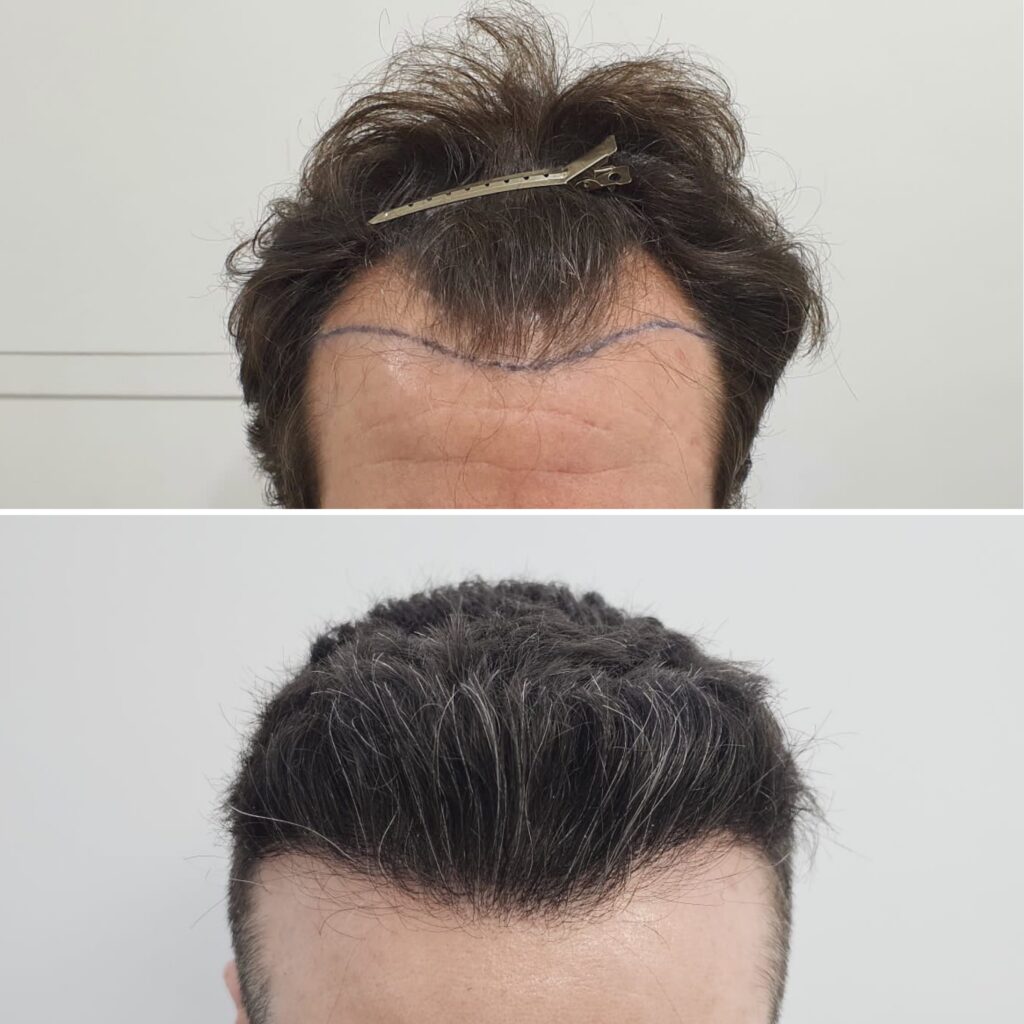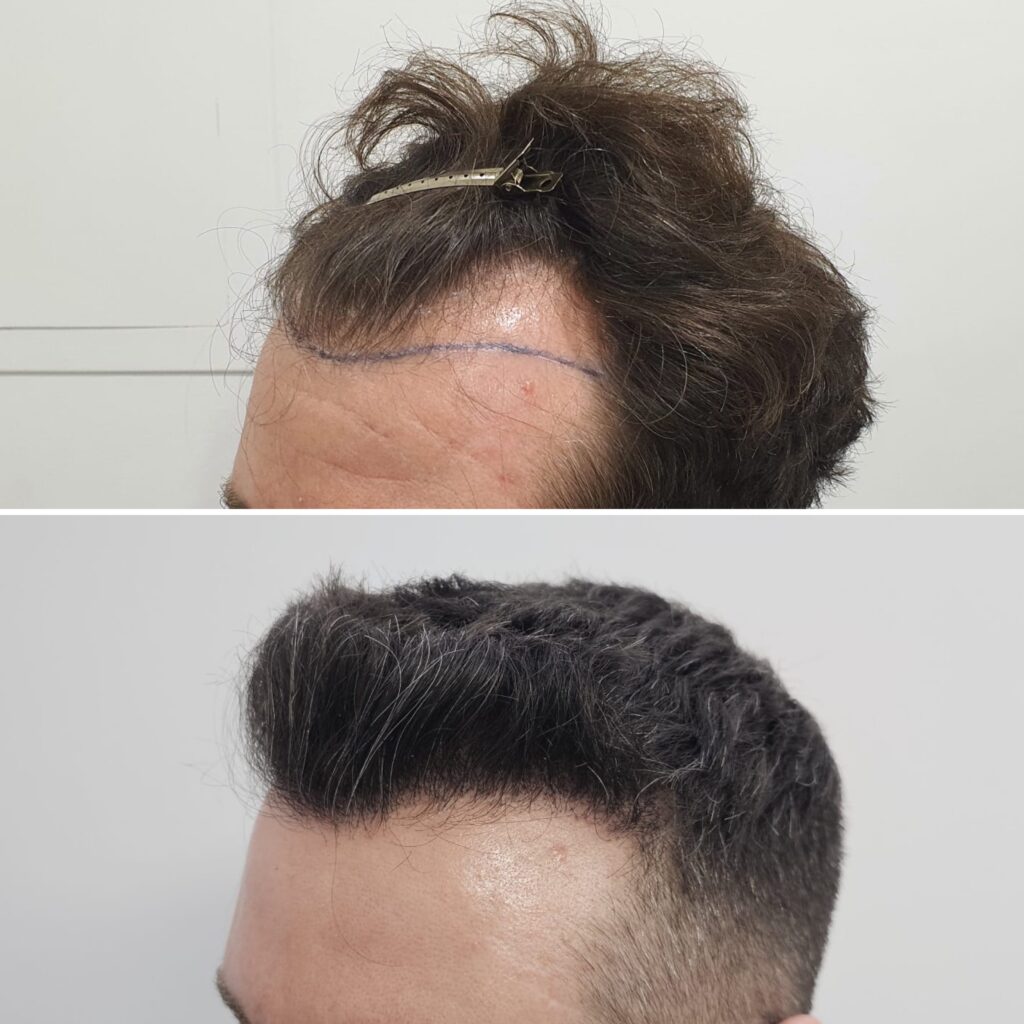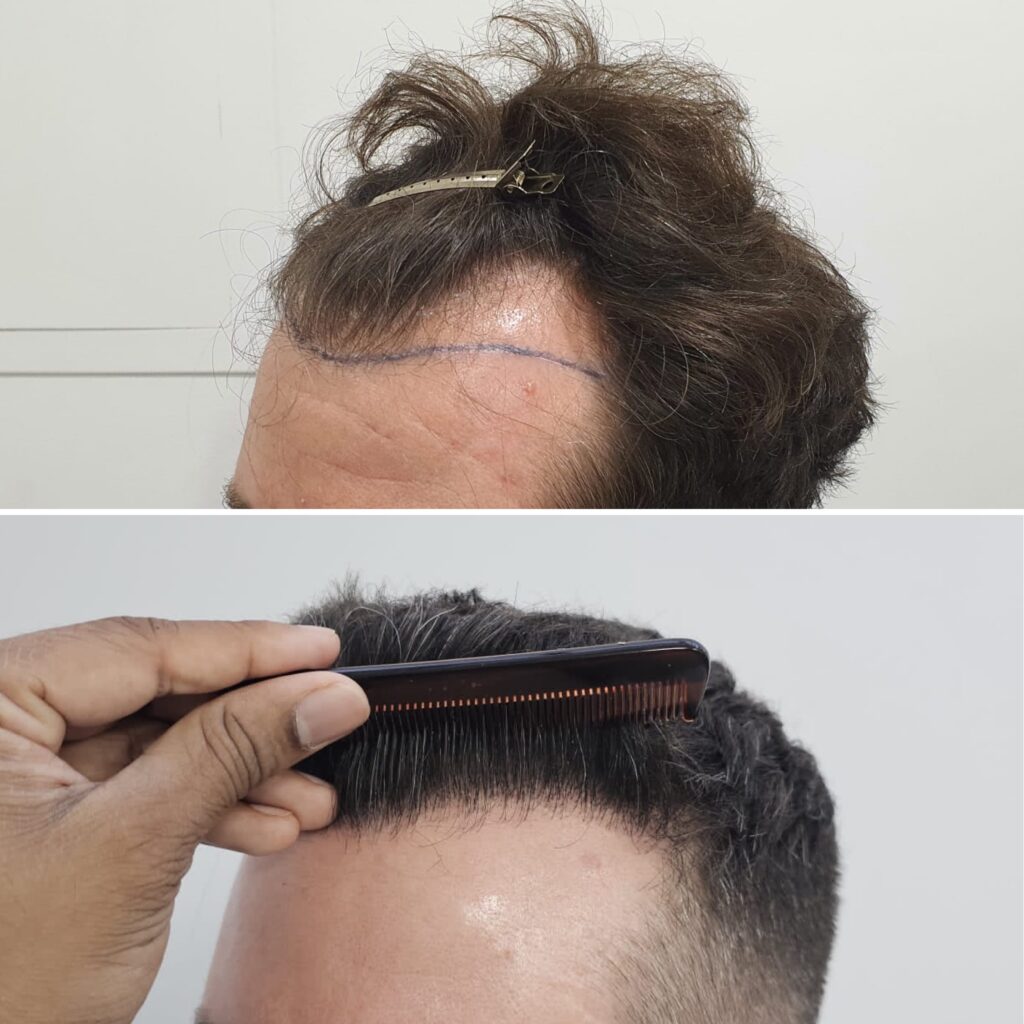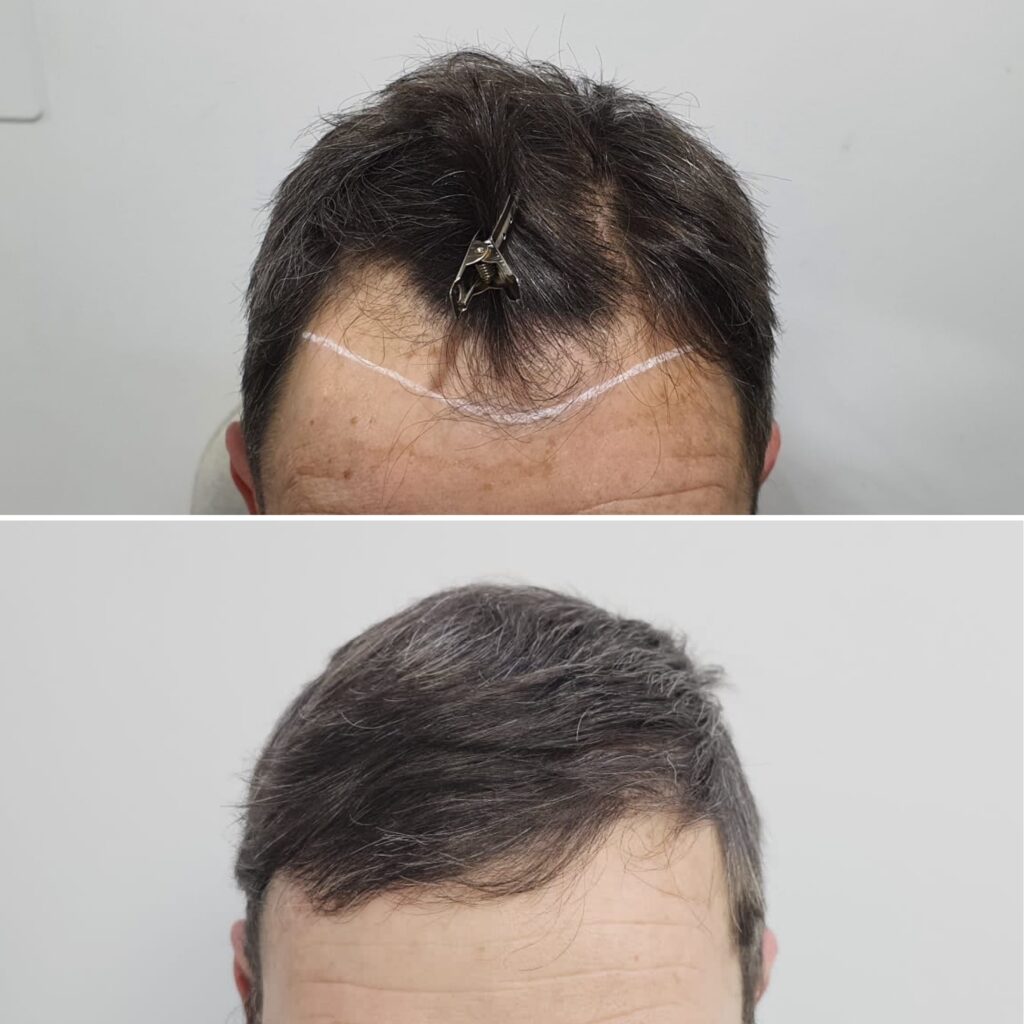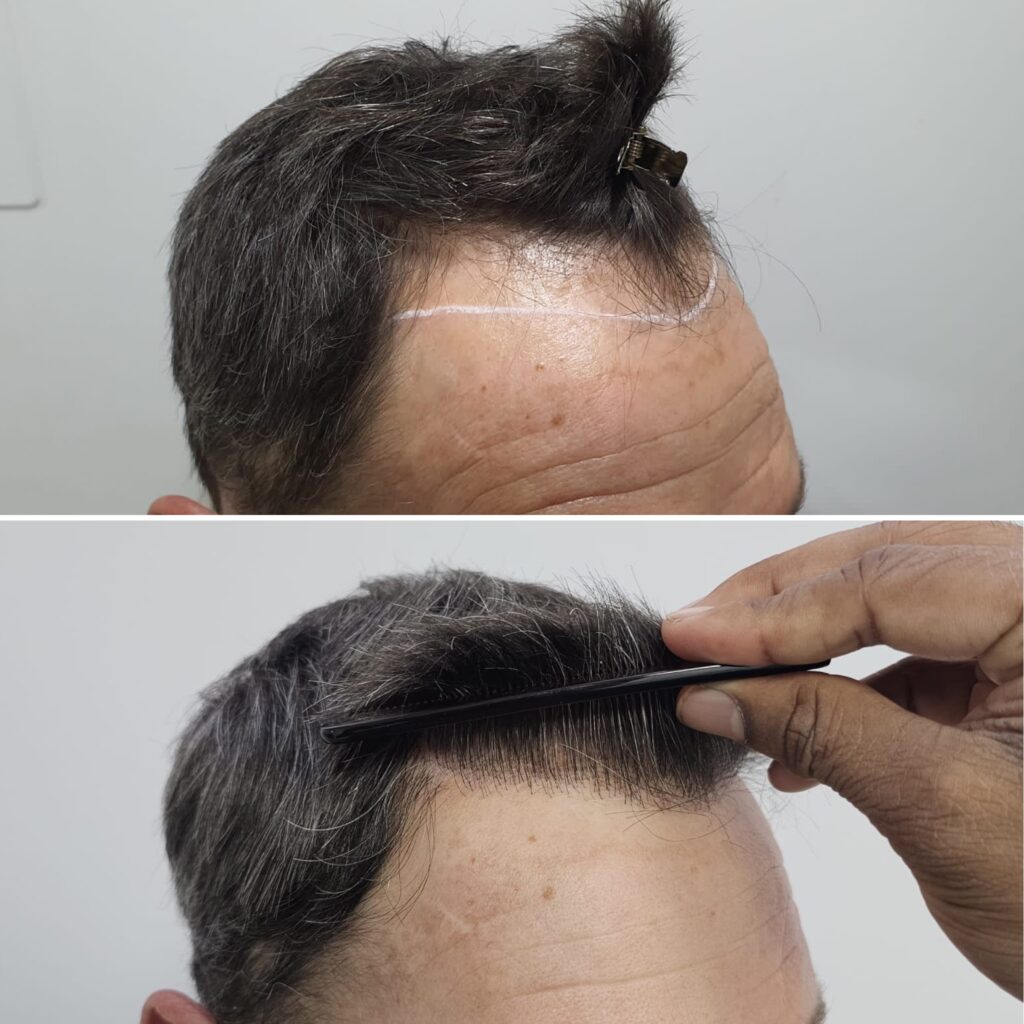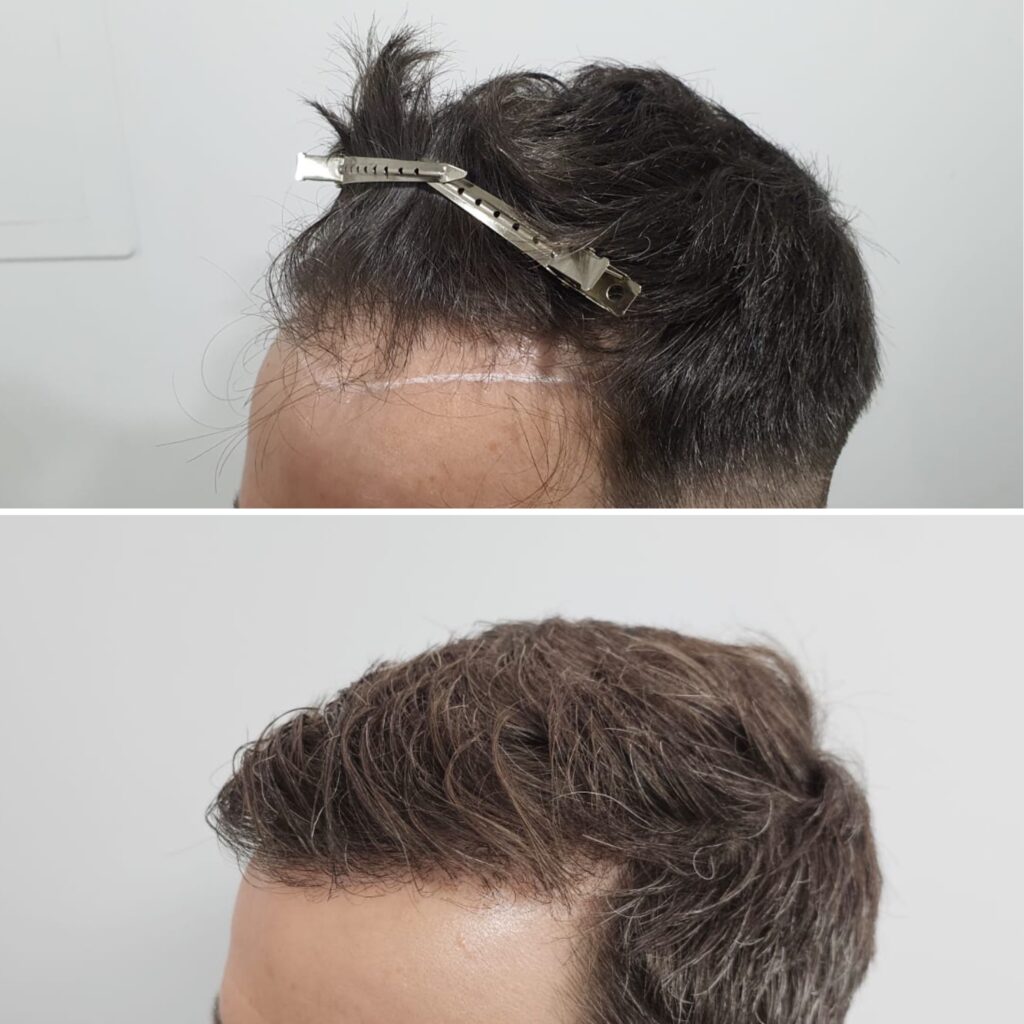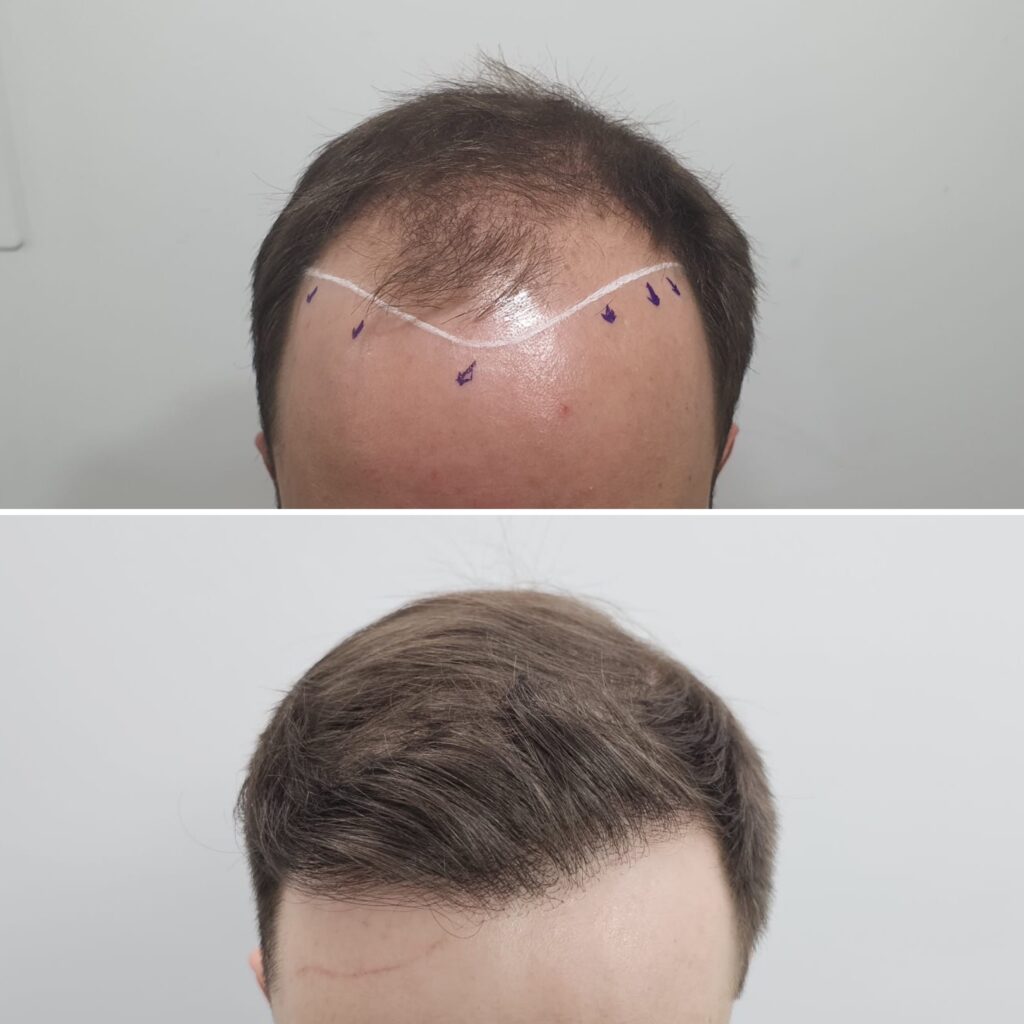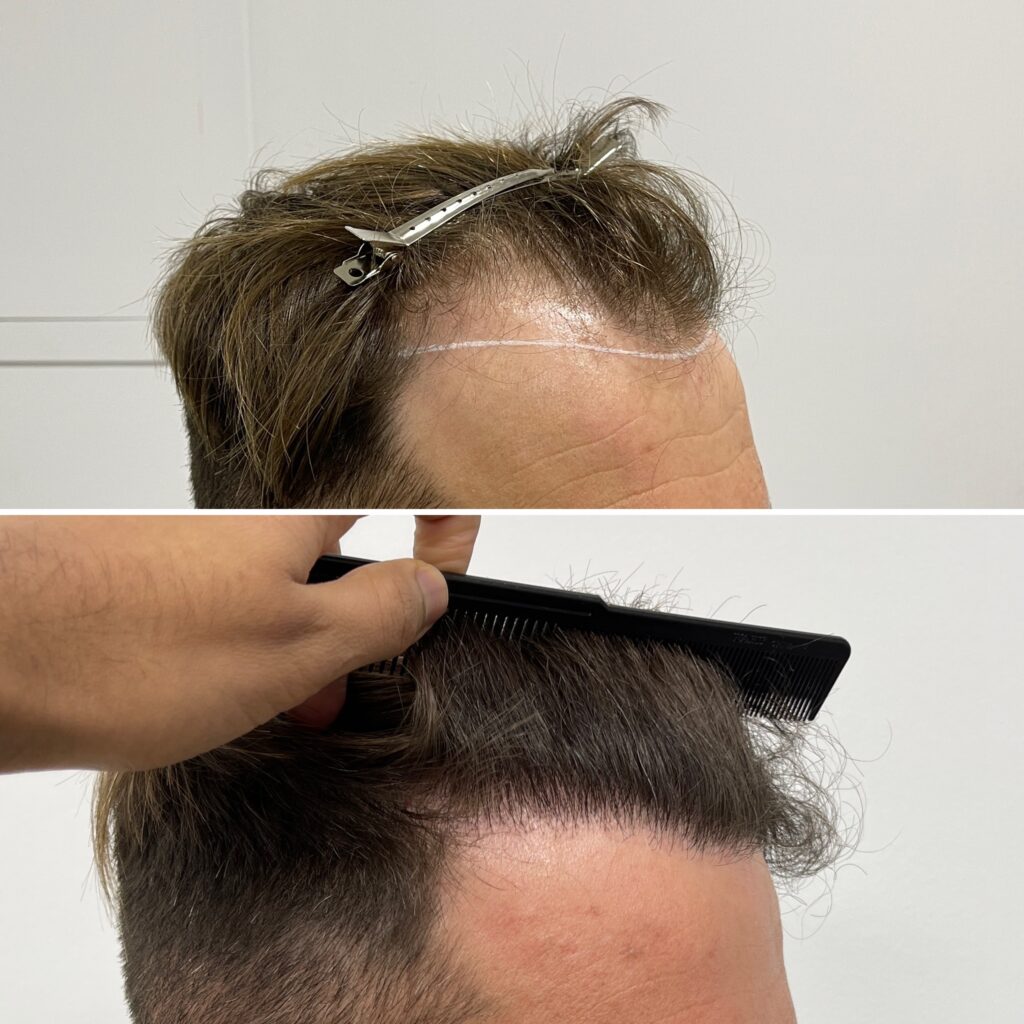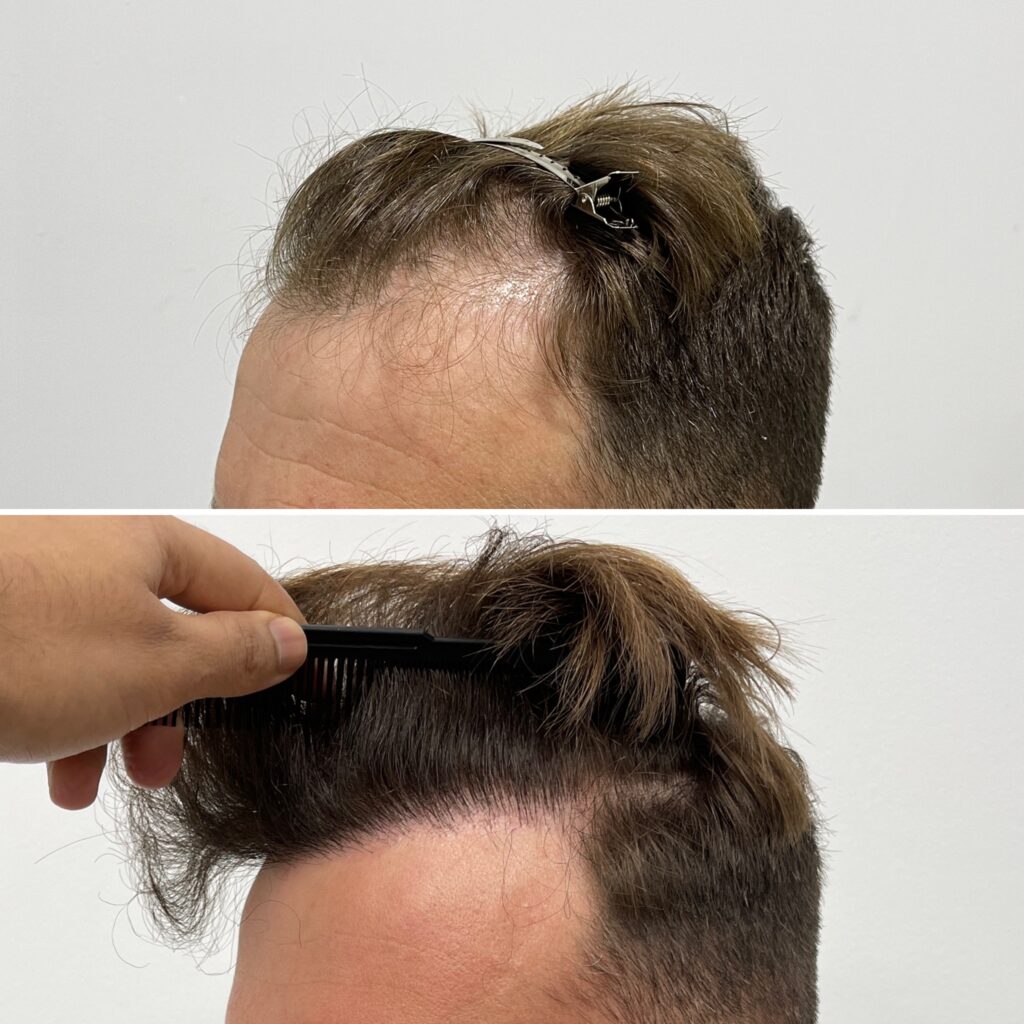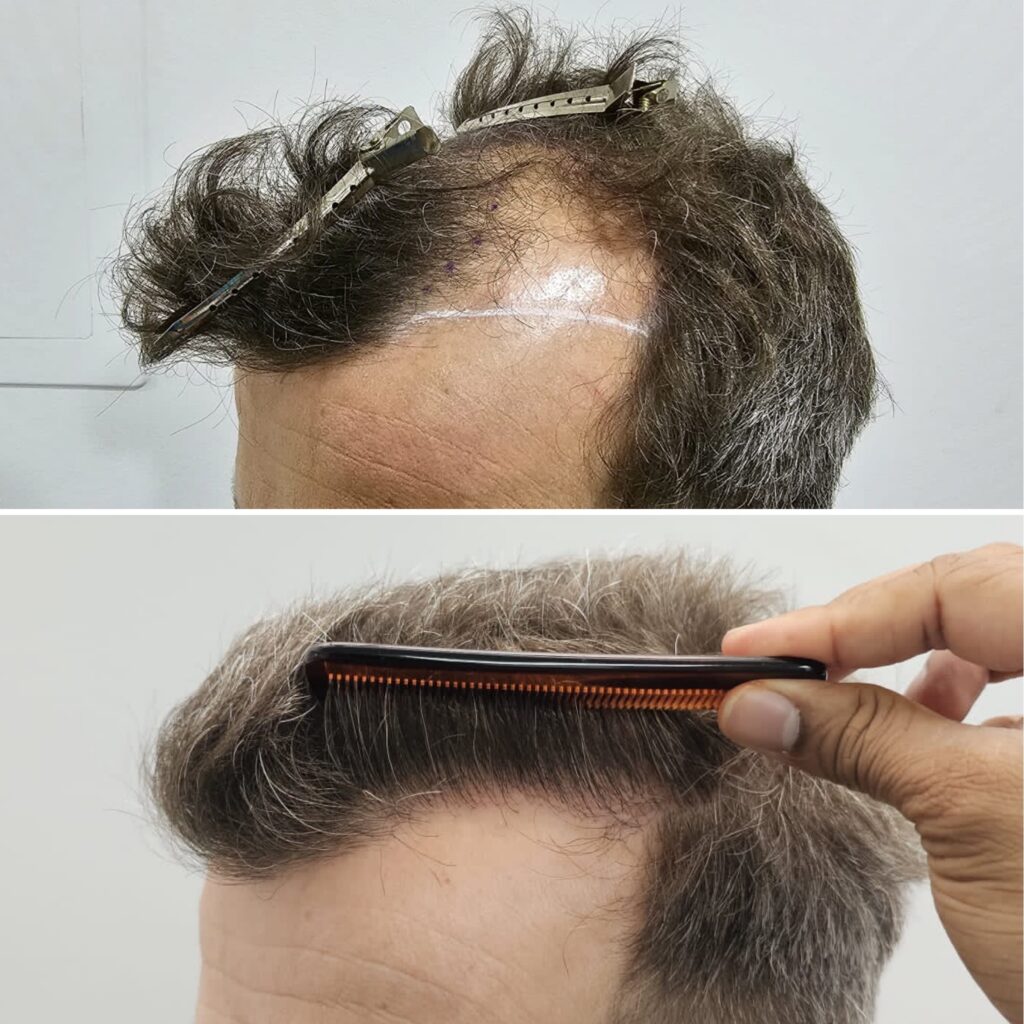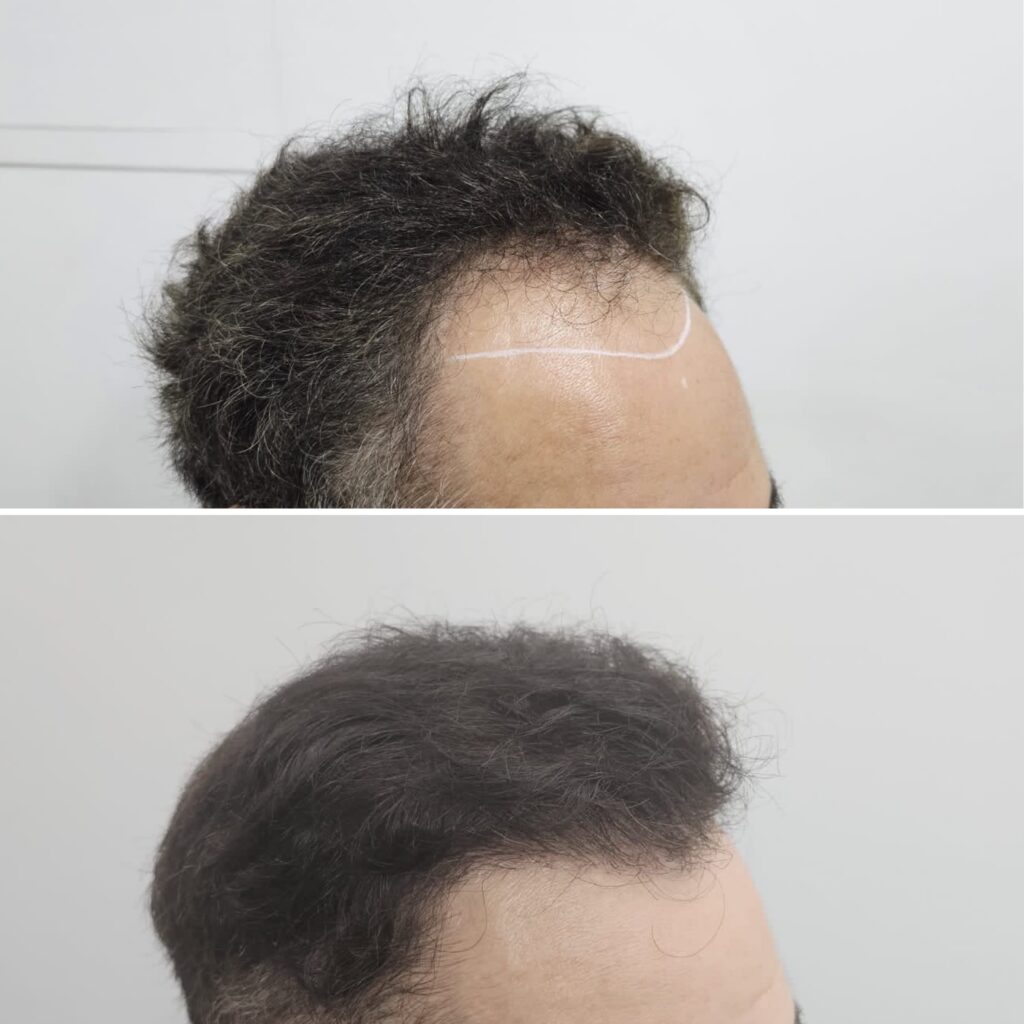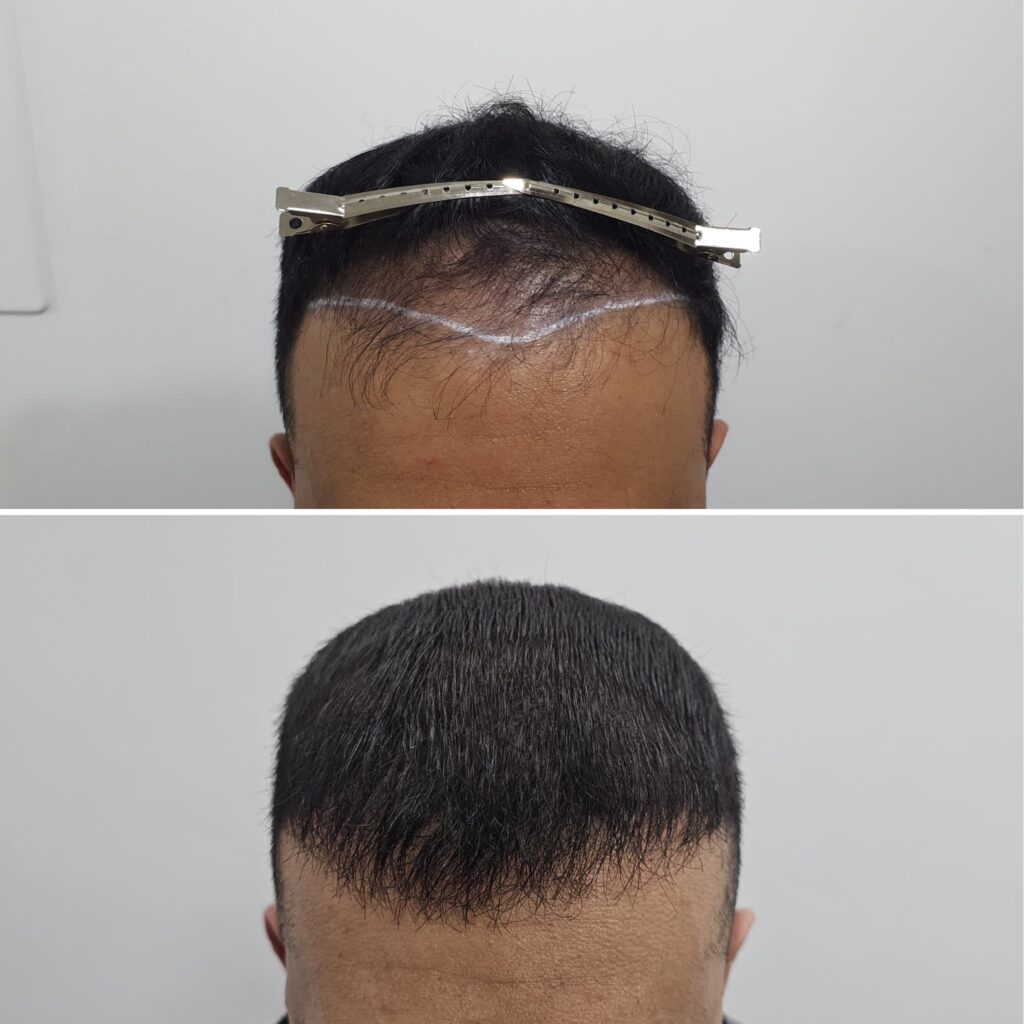
BEFORE AND AFTER HAIR TRANSPLANT RESULTS
VIEW OUR CLINIC'S BEFORE & AFTERS
Our Patient's FUE Hair Transplant: Before and After
Our mission is to provide a high-end hair transplant experience that is driven by clinical excellence and patient-centric care.
Our surgeon-led approach is what truly sets us apart, as all aspects of your procedure are handled by your personal physician, providing you with the utmost attention, safety and results.
The Significance of Post-Operative Care in Results
A successful hair transplant does not end when you walk out of a clinic, but during the weeks and months of the recovery period. The role of post-operative care cannot be underestimated as it contributes to successful healing of the scalp, survival of grafts and overall appearance in terms of density and naturalness.
No matter how complex or sophisticated a surgery may be, it still will not produce its best results without the proper aftercare. This is because young hair follicles that have just been transplanted are sensitive during the initial couple of weeks. They require a healthy environment so that they can settle down and start growing without friction, sweating, harsh chemicals or any activity that may irritate the head.
The correct aftercare will also help prevent complications, such as infection or folliculitis, and reduce swelling and redness, which can affect the quality and comfort of your recovery. The result? Faster recovery, less noticeable scabs, and a clear path to improved growth.
All our patients receive a detailed Aftercare Guide with information on what to expect in the days, weeks and months after your surgery, how to wash your hair, when you can begin exercising and what products and services to avoid.
Timeline of Results
Week 1: Recovery and healing
Over the first 7-10 days, your scalp will be healing. You will observe:
- Minor swelling or redness of the donor site and the recipient sites
- Development of small scabs on the grafting areas.
- Scalp sensitivity or tightness
The majority of the scabs will fall naturally towards the end of this stage. At this time, it is essential to follow all the after-surgery care guidelines; the grafts should not be touched, scratched or disturbed in any manner.
Months 1-3: Dormancy and Shedding Phase
This is the most surprising and at some point worrying point for the patients.
- During weeks 2-4, when shock loss occurs, the new transplanted hairs begin to fall away.
- It is absolutely natural and temporary.
- Under the surface, the follicles become alive and enter a resting state.
The scalp might look like it used to be before the operation; do not panic because this is a normal process of hair growing back.
Months 4-6: Initial Regrowth Commences
Now you should begin to see some minor improvements.
- The thin, fine hairs begin to grow.
- Hair density can be patchy initially.
- The texture may vary, finer or curlier, but this too will normalise as time goes by.
The majority of patients can observe a tangible result at the end of the 6th month, and this encourages them.
Months 9-12: Complete Results and Maturation
This is where the change really happens and the transformation becomes visible.
- The hair strands become thicker, fuller, darker, and more homogeneous.
- The bald or thinning spots fill in significantly.
- The hairline takes a definitive form.
At this point, you will be able to see the full benefits of your transplant, and you can cut, style and treat your hair as usual.
Realistic Expectations: What a Hair Transplant Can and Can't Do
Hair transplant can be a life-altering procedure, but it is paramount to be clear on realistic expectations. In our clinic, we focus our efforts to provide lasting, natural results by offering honest advice and accurate medical treatment. That will mean:
What it can do:
- Regrow balding or thinning regions using your own natural, healthy donor hair (mostly, the back or sides of your head).
- Reframe your face with a well-designed hair line that matches your age, bone structure and your natural hair pattern.
- Restore your confidence with results that grow, blend in, and age naturally.
What It Cannot Do:
- Reproduce teen density - the number of grafts that can be extracted safely and safely implanted is limited.
- Achieve radical changes within a single appointment, particularly when addressing severe hair loss or limited donor coverage.
- Completely prevent hair loss in the future - maintenance treatments, such as finasteride or minoxidil, may still be recommended for use on non-transplanted surrounding hair.
We do not want to make promises of perfection; we want to achieve results that look so natural. Each procedure is unique, as it is determined by your pattern of hair loss, the availability of donor hair, and your long-term expectations.
This may not be the answer for you if you are expecting a miracle to happen overnight. But should you desire a careful and long-lasting transformation, we know how to get that for you.
Factors That Influence Final Results
- Genetics /Quality of Donor Hair
The quality, thickness, and density of your donor hair (usually from the back or sides of your head) play a critical role. Some people have grafts that are abundant and thick, and others are limited. Genetics also determine how your remaining hair will age further down the road.
- Grafts Available
The transplantation surgery does not produce new follicles of hair; it only redistributes available hair. We therefore have to plan well taking into consideration the number of grafts and their areas of most significant impact. What matters is the design of the strategy and not just the raw numbers.
- Health and Lifestyle Factors
Smoking, poor nutrition, unaddressed health conditions, and poor scalp care may slow down the healing period and hair regrowth. A healthier lifestyle will improve the supply of blood to the scalp, resulting in denser and more permanent results.
- Technique and Skill of the Surgeon
Your surgeon, his technique, artistry, and experience can make a huge difference. The design of the hairline, angle, distance, depth, and position of every graft contribute to how natural the result will be. Poor technique can lead to an unnatural look and growth alongside scarring or poor density.
That is why, in our clinic, we provide a more personal approach, bringing you through the consultation process to assess these factors and see whether we can create something that suits your unique needs and long-term vision, as opposed to promising one-size-fits-all. What we want are not just good outcomes or results that make you feel good, but safe results, results that feel natural, results that hold up over time.















